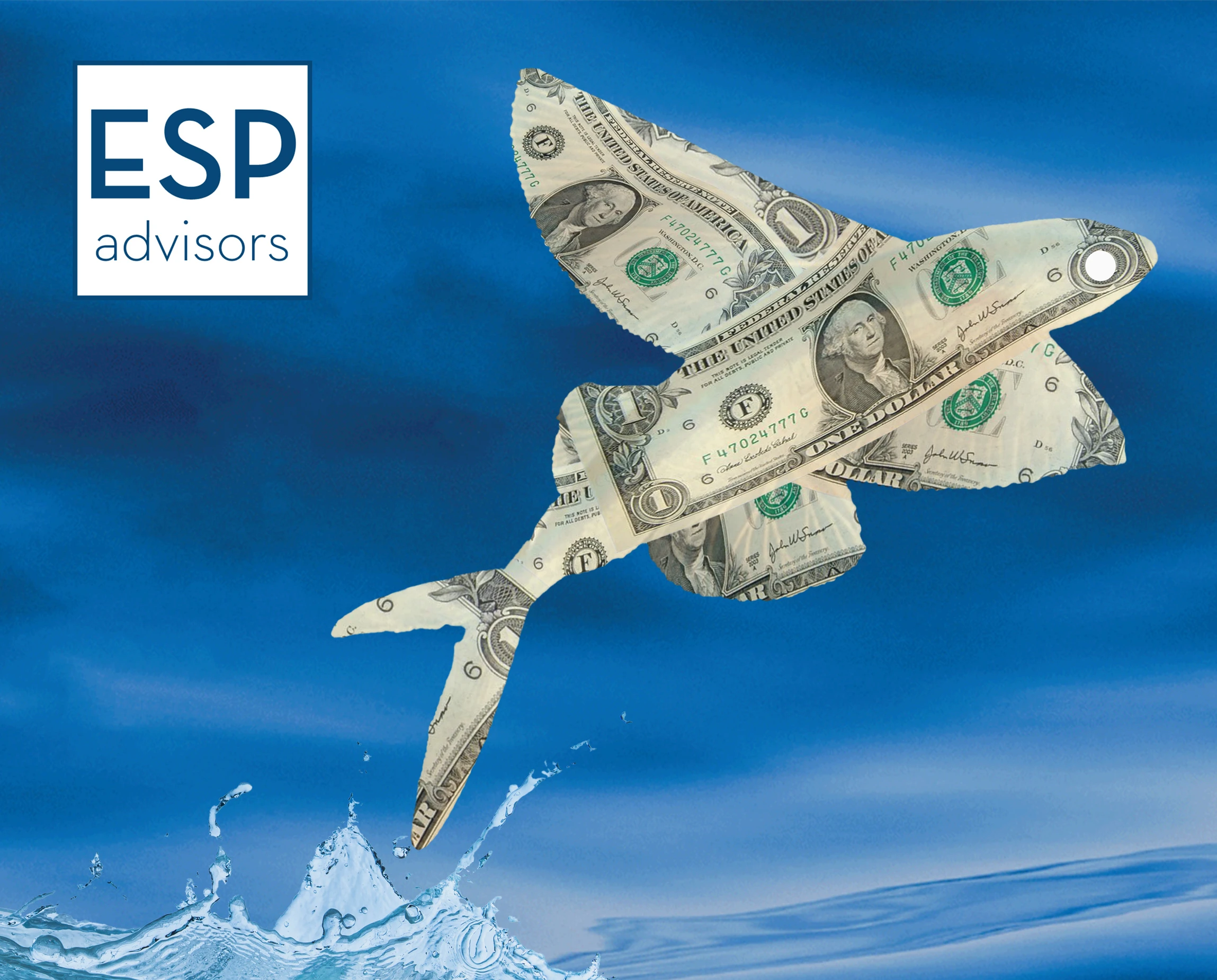The House and Senate Fiscal Year 2022 appropriations bills include significant increases for ocean, science, and environmental programs. Here’s a summary of where we are in the process, what comes next, and what’s in the bills.
Graphic by Cat Elia, ESP Advisors Art Director
Appropriations 101
A (very simplified) synopsis of how government funding is supposed to work:
Step 1: After a year of working with the agencies on their needs and the administration’s priorities, the President’s Budget is submitted to Congress early in the calendar year to coincide with the State of the Union Address.
- This triggers the start of the appropriations process for the upcoming fiscal year.
- Congress uses the President’s Budget as a template (or not, depending on politics) to draft their appropriations bills, with jurisdiction over federal government resources divided into 12 subcommittees.
- All bills raising revenue (and, traditionally, appropriations bills) originate in the House.
Step 2: Appropriations committees collect requests from their colleagues in Congress in the spring and, based on those requests and their own priorities, write, amend, and mark up their bills in late spring/early summer.
Step 3: Congress passes and the President signs into law all 12 appropriations bills to fund the government by the end of the fiscal year (September 30).
However, you may have noticed, things are never quite this easy or timely in real life. So, we wrote up a quick update on what’s going on with government funding right now, what might come next, and what’s in these bills for oceans, environment, and science.
Landscape
Congress has not yet passed funding bills for Fiscal Year (FY) 2022, which ended on September 30, 2021. Rather than face a government shutdown, Congress passed a Continuing Resolution (CR), which extends current funding levels until whatever date Congress agrees. On February 18, 2022, Congress passed another Continuing Resolution, kicking the deadline for government funding to March 11, 2022 at midnight.
The House passed nine of its 12 appropriations bills in a consolidated package last year, including the Energy and Water Development bill, which funds the Department of Energy, Army Corps of Engineers, and the Interior and Environment bill, which asked for a report on incorporating new technology in offshore aquaculture to stimulate biological productivity and sequester atmospheric carbon dioxide. The Commerce, Justice, Science bill, which funds NOAA and the NSF, was left out of the consolidated package.
The Senate hasn’t passed any of its appropriations bills. Three bills have been approved by the Appropriations Committee, and Senate Appropriations Committee Chair Leahy released the remaining nine bills in October but there has been no further action.
Timing
House Appropriations Chair Rosa DeLauro (D-CT-03) and Senate Appropriations Chair Patrick Leahy (D-VT) earlier this month announced that bipartisan, bicameral negotiators agreed on a framework for FY 2022 appropriations, making it more likely that the actual appropriations bills may make it to the President’s desk for signature. It is possible that some or all of the bills will be passed in an omnibus by the March 11 deadline, or they may need a few more weeks to get it done. The House is expected to bring an omnibus to the floor in early March. Nothing is certain, however, and there are strong factions in Congress who would prefer a CR until after the November election. Appetite for a government shutdown is currently low, but it is always a risk.
FY 2023?
This delay (as well as a few other factors) means the FY 2023 process is also delayed. President Biden will deliver his State of the Union Address late, on March 1, and his budget is expected to arrive in Congress around that time.
FY 2022 – What’s in it for oceans?
Both the House and Senate appropriations bills include increased funding for many ocean and seafood related provisions, with final numbers to be determined through negotiation. Here are some relevant highlights from the Senate appropriations bills:
Ocean observing
- $47 million for IOOS Regional Observations, an increase of $6.5 million from FY21. ($50 million in House bill)
- $18 million for Autonomous and Uncrewed Technology Operations, an increase of $4.3 million above the FY 2021 enacted level, and with $8.5 million to go towards supporting extramural partnerships with universities and oceanographic institutions for uncrewed maritime systems (UMS) research, development, testing, and training (CJS/NOAA)
- $3.5 million to continue funding NOAA-wide data acquisition from UMS, as well as for acquisition of UMSs that can serve as a cost-effective augmentation for relevant research missions and fisheries data collection surveys.
- $2.5 million for the Uncrewed Systems Operations Center to procure uncrewed marine surface systems
- $5 million for the National Oceanographic Partnership Partnership (NOPP) to continue to facilitate interagency and public-private partnerships to advance ocean science research, development, and education
Coastal and ocean resilience
- $730 million for NOAA Research, an increase of $116 million or 19 percent above the fiscal year 2021 level. This includes a $51 million or 28 percent increase above fiscal year 2021 for climate research.
- $90 million for the Sea Grant program, $15 million above the fiscal year 2021 level
- $88.5 million for Coastal Zone Management grants, $10 million above the fiscal year 2021 level
- $34 million for the National Estuarine Research Reserve System, an increase of $5.5 million above the fiscal year 2021 level
- $4 million for Army Corps of Engineers research on sea level rise and extreme weather events using geophysical computational modeling (Army Corps)
- $2.6 million for continued Army Corps oyster reef restoration research (Army Corps)
- $47 million for the USGS Coastal Hazards Program, an increase of $6.5 million from FY21, with support for the program’s focus on enhancing blue carbon and mitigating coastal hazards in light of climate change.
Offshore wind and marine energy
- $18.5 million above FY21 levels across NOAA Fisheries to address consultation and permitting, stock assessment, management, and projected resources needs related to the expansion of offshore wind energy projects
- $45.8 million for renewable energy activities, an increase of $17.3 million above FY21, to work with stakeholders, mitigate impacts, and exchange research and information.
- $30 million to support the advancement of innovative technologies for offshore wind development including freshwater, deep water, shallow water, and transitional depth installations.
- $30 million for early-stage research on materials and manufacturing methods and advanced components that will enable high quality wind resources to compete in the marketplace without the need for subsidies, and on activities that will accelerate fundamental offshore specific research and development such as those that target technology and deployment challenges unique to US waters.
- $142 million for marine energy, including $60 million for industry-led competitive solicitations to increase energy capture, improve reliability, and to assess and monitor environmental effects of marine energy systems and components at a variety of scales, including full scale prototypes.
- $24 million for foundational research activities led by universities and other research institutions affiliated with the National Marine Energy Centers.
- Over $30 million for ocean energy technologies.
Illegal fishing
- $500,000 increase above FY21 funding levels for NOAA to enforce policies related to illegal, unreported, and unregulated fishing.
- Report language encouraging NOAA Fisheries to consider changes to the Seafood Import Monitoring Program and to consult with the Department of Homeland Security, the Department of Labor, and other relevant agencies to develop a strategic plan to develop, mature, and adopt artificial intelligence and machine learning technologies to detect imports of fish and fish products at risk of being associated with IUU fishing.
- Requires a report from the US Coast Guard on maritime domain awareness efforts to combat the threats posed by illegal, unreported, and unregulated fishing.
- Directs USAID to support efforts to build the capacity of countries to comply with seafood import monitoring programs and promote the adoption of sustainable fisheries management regimes, as well as to address the fundamental system failures that allow for IUU fishing to persist, jeopardizing economic, environmental, and food security objectives.
Seafood
- Direction to revise the Environmental Protection Agency and the Food and Drug Administration’s advice about eating fish.
- Direction to combat food mislabeling, improve labeling accuracy, address concerns related to animal product terminology, counter seafood fraud, and evaluate the feasibility of organic certifications for wild seafood.
Aquaculture
- Research and development funding, including $2 million for aquaculture research, $1 million for the development of aquaculture technology for warm water marine fish seedstock, and $1 million for a pilot Aquaculture Experiment Station in partnership with universities to support rapid response research on sustainable aquaculture.
- Maintains FY21 level funding to support cooperative projects focused on harmful algal bloom impacts on aquaculture and maintains FY21 level funding to support a Pacific Shellfish genetics and breeding program to develop genetically improved stock and modernize technologies.
- $2.5 million increase to $20 million for the NOAA Fisheries Aquaculture Office. NOAA is encouraged to give priority consideration to promising but less commercially developed technologies, such as those targeting shellfish, seaweed, and other relative newcomers to the domestic aquaculture industry.
- $15 million to Sea Grant Aquaculture Research, an increase of $2 million above FY21. NOAA is encouraged to explore new research topics, including engineering of ocean-based infrastructure, and accumulation and metabolization rates of brevetoxins in commonly farmed shellfish, and to support a sustainable carbon sequestration demonstration project in deep ocean water.
Marine debris
- $10 million for the NOAA Marine Debris Program
- $75 million for State Department programs to reduce ocean plastic pollution and other marine debris, including technical assistance for waste management
- $1 million for USAID cost-matching projects that protect marine species severely impacted by marine plastic debris, including sea turtles, cetaceans, seabirds, coral reefs, and fish, specifically the most vulnerable marine species.
For more information, including a comparison of particular ocean provisions between the Senate and House appropriations bills, contact ESP Advisors: info@espadvisor.com

